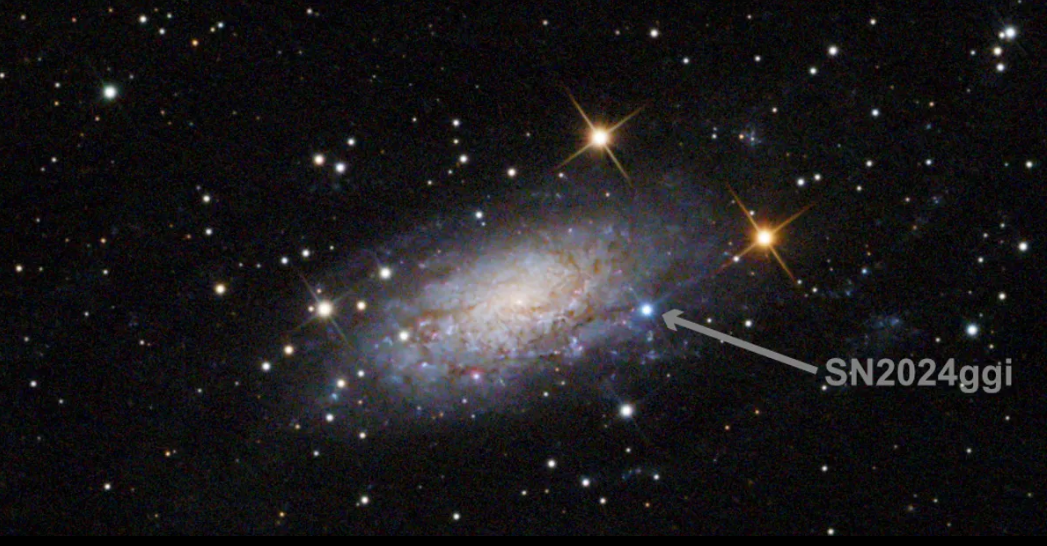When a star reaches its final stage, it undergoes a powerful explosion that can emit more light and energy than the Sun will during its entire existence.
This event is called a supernova and occurs only once per star, although due to the abundance of stars, they are not uncommon. Observing one close enough to Earth to be visible with a regular telescope is quite rare, but it recently happened.
Amateur astronomer Duncan Milburn, while stargazing in Australia, witnessed an extraordinary sight through his telescope.
He noticed a source of light in a nearby galaxy that was significantly brighter than its surroundings. Upon further investigation and analysis, it was confirmed that he had captured the first images of this remarkable supernova event.
This supernova, named “SN2024ggi,” is situated in a galaxy known as “NGC 3621” and is about 22 million light-years away.
Although the naming process could use some improvement within the scientific community, the supernova itself is incredibly impressive and appears to be growing brighter.
The brightness of celestial objects is measured in magnitudes. Objects with a magnitude of 5 or less can be seen with the naked eye on a dark night. Initially classified as a magnitude 19, this supernova requires a relatively large telescope to observe. As it progresses through its explosive phase, it continues to increase in brightness.
It is projected to reach a magnitude of 14 officially, with some speculating it may become even brighter.
For amateur astronomers hoping to catch a glimpse, be prepared for a challenge.
The galaxy housing the supernova is situated 33 degrees south, which explains its discovery in Australia.
Those in the southern United States may have a brief viewing window during the night, but optimal observation would require traveling to the Southern hemisphere.
Best wishes for a successful stargazing experience!
If you found this intriguing, you might also enjoy reading about a second giant hole that has appeared on the sun’s surface. Here’s what it signifies.









